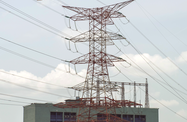As gas consumption levels reach record highs in Malaysia and across the continent, the country is positioning itself as a regional trade centre for liquefied natural gas (LNG). With a series of capital-intensive LNG investments, Malaysia will likely see a strong increase in LNG import-export volumes for some time to come. However, muted economic growth in China and India, and with it slowing demand, could limit the country’s ability to export its new LNG production.
Heavy gas subsidies and increasing LNG demand, which has increased from 315bn cu feet in 1990 to more than 1260 cu feet in 2010, a compounded annual growth rate of 7.2% -- is expected to result in Malaysia’s consumption rate outstripping production between 2011 and 2016. This trend may lead to a potential gas shortage beginning in 2014, signalling the need for Malaysia to expand its LNG import infrastructure.
To this end, Malaysia has invested in a number of infrastructure projects, including an LNG re-gasification terminal (RGT), located offshore near the Sungai Udang port in Malacca. The RGT was developed by the gas-processing subsidiary of Petroliam Nasional (Petronas), Petronas Gas, and work was completed in mid-2012.
The RGT includes an island jetty with a re-gasification unit, two floating storage units and a new 3-km, sub-sea pipeline that connects to the onshore gas pipeline network. According to the Prime Minister’s office, the facility is expected to commence operations this month. Once it is operational, the RGT will have the capacity to process and store up to 3.8m tonnes per annum (tpa) of LNG, Petronas Gas said in a statement.
Current supply contracts with the new facility include a deal with Norway-based Statoil to supply 1bn cu metres of LNG over three and a half years, a deal with France-based GDF Suez to supply 2.5m tpa also over three and a half years, and a 20-year deal with Qatargas for 1.5m tpa. Petronas is also looking to import gas from the Santos-Petronas Gladstone LNG project in Australia, with the first shipments of LNG to arrive in 2014, once the deal is completed.
To further enhance LNG import capacity, a second re-gasification plant and import terminal is being planned at the Pengerang Integrated Petroleum Complex (PIPC) in Johor. The $56bn project will include oil refineries, petrochemical plants and a $1.3bn investment allocated specifically for the LNG terminal and the re-gasification plant.
The investment will be a joint venture among local engineering firm Dialog Group, Netherlands-based oil and gas storage company Royal Vopak, and the Johor state government, with the first phase of construction expected to be complete by 2014. Storage capacity at the terminal is expected to be around 5m cu metres and will enable international users to store and trade LNG.
According to Mohd Yazid Jaafar, the CEO of the Johor Petroleum Development Corporation, studies by oil companies and the Performance Management Delivery Unit (the state body responsible for overseeing the implementation of the country’s economic transformation programme, PEMANDU) show that the PIPC will contribute RM17.7bn ($5.73bn) to gross national income by 2020, with the PEMANDU study also showing it will provide 8500 high-skilled job opportunities by 2020.
In addition to the onshore LNG developments, Petronas has recently awarded the Technip-Daewoo Consortium with a contract to develop Malaysia’s first floating LNG (FLNG) facility, which is expected to be operational by 2015. The FLNG facility is expected to produce 1.2m tpa and increase Malaysia’s overall production capacity from 25.7m tpa to 26.9m tpa.
The Sabah-Sarawak Gas Pipeline (SSGP) in Borneo, meanwhile, has reached 85% completion and is now entering the final phase of development. According to Shaiful Bahrin Hashim, the senior project manager at SSGP, “We estimate the gas to start flowing by April 2013, if everything goes as planned.” The pipeline is approximately 521 km in length and will deliver natural gas from a terminal in Kimanis to an LNG facility in Bintulu.
With high population growth rates across Asia and increasing demand for power, Malaysia’s ongoing natural gas investments may be a highly strategic asset entering the second half of the decade, particularly if it can secure its position as a major supplier now. If, however, demand slows considerably in China, for which the IMF recently downgraded its 2012 GDP growth prediction of 8% to 7.8%, and India, which also just saw the IMF’s GDP growth estimate for the year fall from 6.9% to 6%, Malaysia could be faced with more capacity than it can use.
Still, the new projects should provide Malaysia with substantial manoeuvrability in the LNG market, both in terms of expanding export capacity, as well as developing a more sustainable import mechanism to meet domestic consumption trends.

